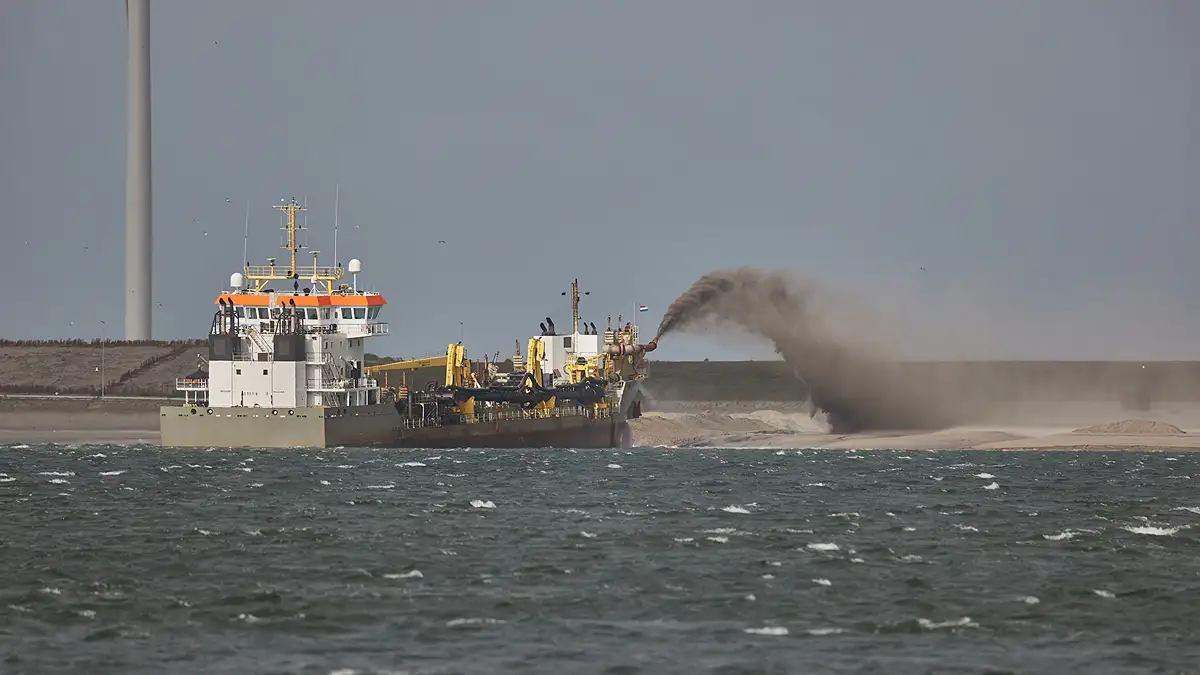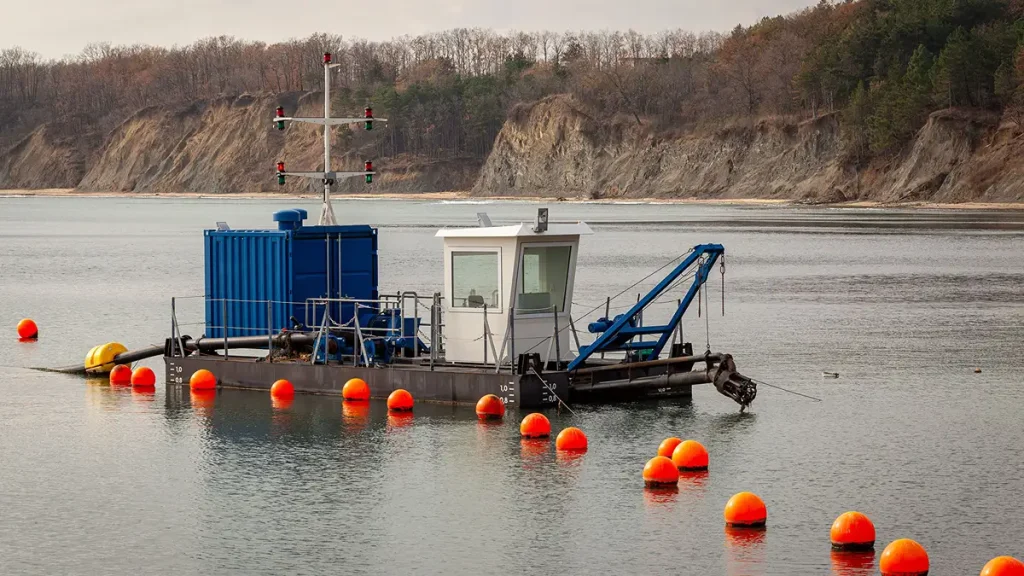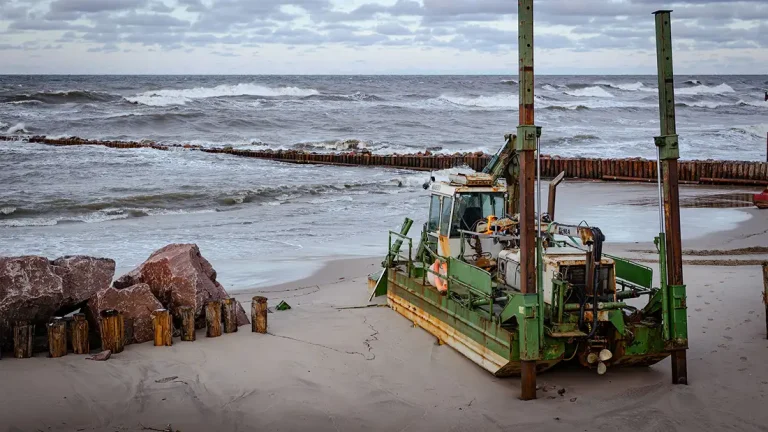Selecting the appropriate dredging technology for large-scale industrial and infrastructure projects is a decision that directly impacts performance, cost-efficiency, and regulatory compliance. Whether the operation involves maintaining a shipping channel, reclaiming land, or managing sediment in mining operations, the choice between hydraulic and mechanical systems must be grounded in a clear understanding of site-specific requirements and long-term operational goals.
In high-value sectors such as energy, marine infrastructure, and mineral extraction, the ability to balance production volume, material handling precision, and environmental responsibility is critical. The selected dredge technology must support the removal of targeted materials without causing unnecessary turbidity or disruption, especially in ecologically sensitive or regulated zones. As environmental standards tighten, systems that reduce sediment resuspension and allow for accurate, trackable excavation are increasingly favored by both private and public sector stakeholders.
From a procurement perspective, dredging machines are more than operational tools—they are long-term capital assets that should deliver measurable returns across their lifecycle. Factors such as equipment scalability, energy consumption, automation readiness, and integration with monitoring systems (e.g., GPS, IoT) are now standard parts of the evaluation process. The goal is not simply to remove sediment, but to do so in a way that aligns with modern project delivery models and risk management expectations.
Ultimately, the right dredging technology ensures not only technical success on-site but also contributes to broader strategic objectives, controlling costs, improving compliance, and maximizing operational uptime in some of the most demanding project environments.




Understanding the Core Differences: Hydraulic vs. Mechanical Dredging
What Is Hydraulic Dredging?
Hydraulic dredging is a widely used form of dredging technology that relies on high-powered pumps and pipelines to remove sediment in the form of a slurry, a mixture of water and fine material. This method is especially effective for large-scale operations requiring continuous removal of soft sediments such as silt, sand, and mud. Ideal for projects involving wide-area coverage, hydraulic dredge technology offers high efficiency in terms of volume moved per hour. Applications include harbor deepening, land reclamation, riverbed maintenance, and tailings pond management. Its ability to transport sediment over long distances without the need for constant repositioning makes it a preferred method in many infrastructure and mining projects.What Is Mechanical Dredging?
Mechanical dredging uses direct excavation methods, typically with dredging machines such as clamshells, backhoes, or bucket-ladder systems, to dig and lift sediment from underwater surfaces. These systems are well-suited for handling heavier, consolidated materials like clay, gravel, rocks, and debris. This form of dredge technology is part of a broader category of modern dredging technology that provides a high degree of control and precision, making it particularly useful in confined or complex environments such as port maintenance, construction zones, or areas near submerged infrastructure. However, mechanical dredging can lead to higher turbidity levels due to the direct disturbance of sediment layers, which may require mitigation strategies in environmentally regulated projects. Each system offers unique advantages based on project requirements, site conditions, and sediment type. Understanding the core functionality of both hydraulic and mechanical dredging technology helps decision-makers select the best approach for maximizing efficiency and minimizing environmental impact.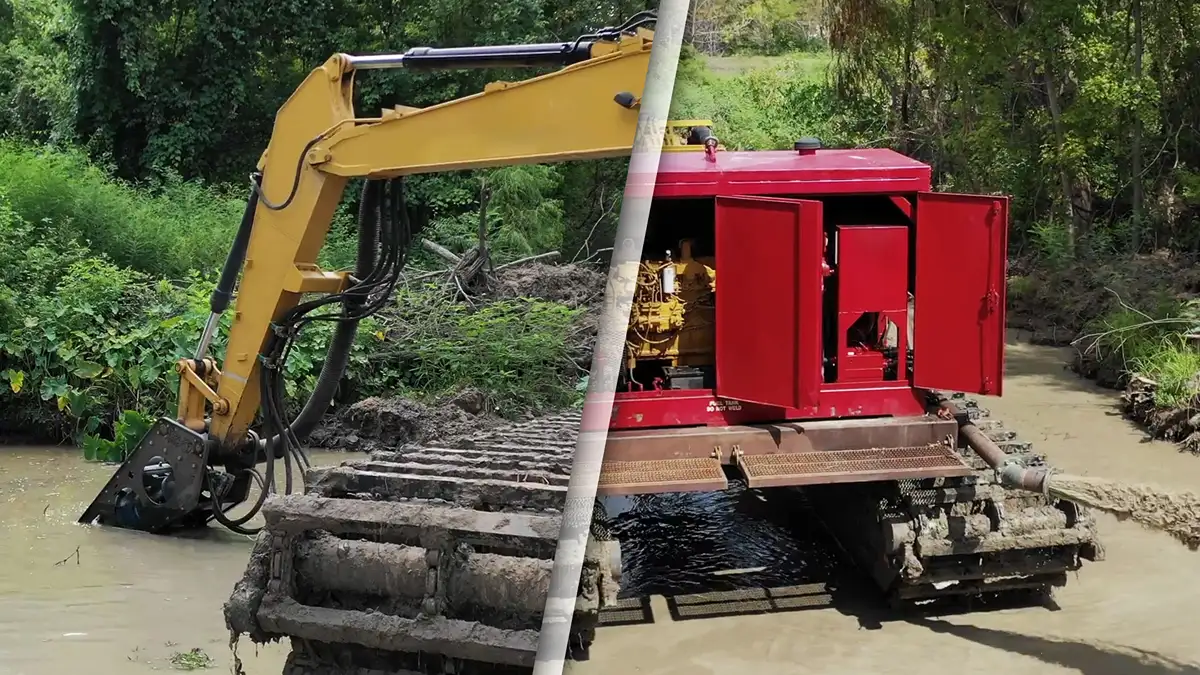
Matching Dredging Machines to Project Requirements
When to Choose Hydraulic Dredging Systems
Hydraulic systems represent one of the most efficient forms of dredging technology for projects that demand high-volume sediment removal across wide, unobstructed areas. These systems utilize powerful pumps to create a slurry that can be transported over long distances, making them ideal for operations such as harbor deepening, river desilting, and large-scale land reclamation. This type of dredge technology excels in removing soft, fine-grained materials like silt, mud, and sand. It delivers continuous performance and minimizes sediment resuspension, which is especially important in environmentally sensitive zones. Hydraulic dredging machines also reduce the need for frequent repositioning, which improves productivity and lowers labor requirements on expansive job sites. When the primary project goal is to move a high volume of lightweight material with minimal environmental disruption, hydraulic dredging systems offer one of the best return-on-investment profiles available in modern dredging technology.
When to Choose Mechanical Dredging Systems
Mechanical systems are the preferred choice when precision, material density, and site constraints are the primary challenges. This category of dredging machines includes clamshell dredgers, backhoes, and bucket ladder systems, all of which are engineered to physically excavate and lift heavy, compacted, or debris-laden sediment. Dredging technology based on mechanical systems is particularly effective for targeted sediment removal near marine structures, docks, bridges, or underwater pipelines. This approach is commonly used in projects that involve contaminated site cleanup, infrastructure protection, or confined working areas such as canals and narrow harbors. While mechanical systems typically offer slower throughput than hydraulic methods, their ability to manage dense or consolidated material with high precision makes this form of dredging technology essential for complex excavation scenarios where control, accuracy, and material type are critical factors.Hybrid Equipment and Excavator-Mounted Pumps
In increasingly diverse and unpredictable dredging environments, hybrid solutions that blend mechanical and hydraulic capabilities are gaining traction. Excavator-mounted dredging pumps represent a powerful evolution in dredging technology, allowing operators to dig with mechanical force while simultaneously transporting the material hydraulically through an integrated pump system. These hybrid dredging machines offer excellent adaptability in mixed terrain—such as riverbeds with sediment layers of varying density or municipal water bodies with obstructed access. The integration of both mechanical and hydraulic functions into a single machine reduces the need for equipment repositioning and increases overall operational agility. Hybrid units are particularly valuable for government, industrial, and inland water projects where mobility, flexibility, and performance must be balanced within tight logistical or regulatory constraints. As a result, they are becoming a go-to option for agencies and contractors seeking to modernize their fleet with multi-purpose, high-efficiency dredge technology.Performance and Operational Considerations
Productivity and Output Efficiency
When evaluating the operational performance of dredging technology, understanding the tradeoffs between hydraulic and mechanical systems is essential. Hydraulic dredging systems are engineered for continuous, high-volume sediment removal. Their ability to create a slurry and transport it via pipeline over long distances enables them to achieve significantly higher throughput—particularly in open, unobstructed environments such as riverbeds, coastal zones, and land reclamation sites. Mechanical systems, by contrast, deliver superior accuracy in more complex or confined work zones. These dredging machines are designed for controlled excavation, making them the preferred choice for harbor work, structural excavation, or sediment removal near critical infrastructure. While slower in terms of cubic yards processed per hour, mechanical dredge technology excels when precision is the top priority. In essence, choosing between hydraulic and mechanical systems involves balancing speed and precision. For large-scale material movement, hydraulic systems provide unmatched volume capacity. For targeted operations in space-constrained or debris-filled environments, mechanical dredging machines offer the control and adaptability needed to execute complex excavation with confidence.Environmental Compliance and Site Impact
Environmental impact is a critical factor in selecting modern dredging technology, especially for projects located in protected watersheds, ports, or jurisdictions with stringent regulations. Hydraulic systems typically offer lower sediment resuspension, which helps reduce turbidity and limits the spread of contaminants in sensitive ecosystems. Mechanical dredge technology, while more disruptive in terms of sediment agitation, may still be necessary in situations where material density or obstruction prohibits the use of hydraulic systems. However, mechanical operations must be closely managed to meet compliance thresholds regarding water clarity, sediment containment, and marine life protection. Both dredging approaches must also be assessed for their emissions and noise profiles. Hydraulic dredging machines often require high-powered engines and pumps, while mechanical systems involve repetitive lifting and mechanical motion that can generate localized noise.Maintenance, Wear, and Lifecycle Costs
The total cost of ownership for any dredging technology solution includes more than the acquisition price; it must account for routine wear, maintenance frequency, spare part availability, and system longevity. Hydraulic dredging systems are particularly susceptible to cutter wear, pump damage, and hose abrasion, especially when dealing with coarse or abrasive materials. Preventive maintenance and monitoring are essential to maintaining optimal performance and reducing downtime. Mechanical dredging machines, while often more rugged, face their own set of maintenance demands. Buckets, cables, pivot joints, and hydraulics endure significant mechanical stress and must be regularly inspected and serviced to maintain operating precision and safety. Access to replacement parts and service expertise is a key factor in ensuring uptime, especially for projects with tight deadlines or remote locations. Ultimately, selecting the right dredge technology involves a close evaluation of system durability, expected wear patterns, and maintenance support. Matching the equipment’s lifecycle capabilities to the demands of the project ensures that performance and cost-efficiency remain aligned over time.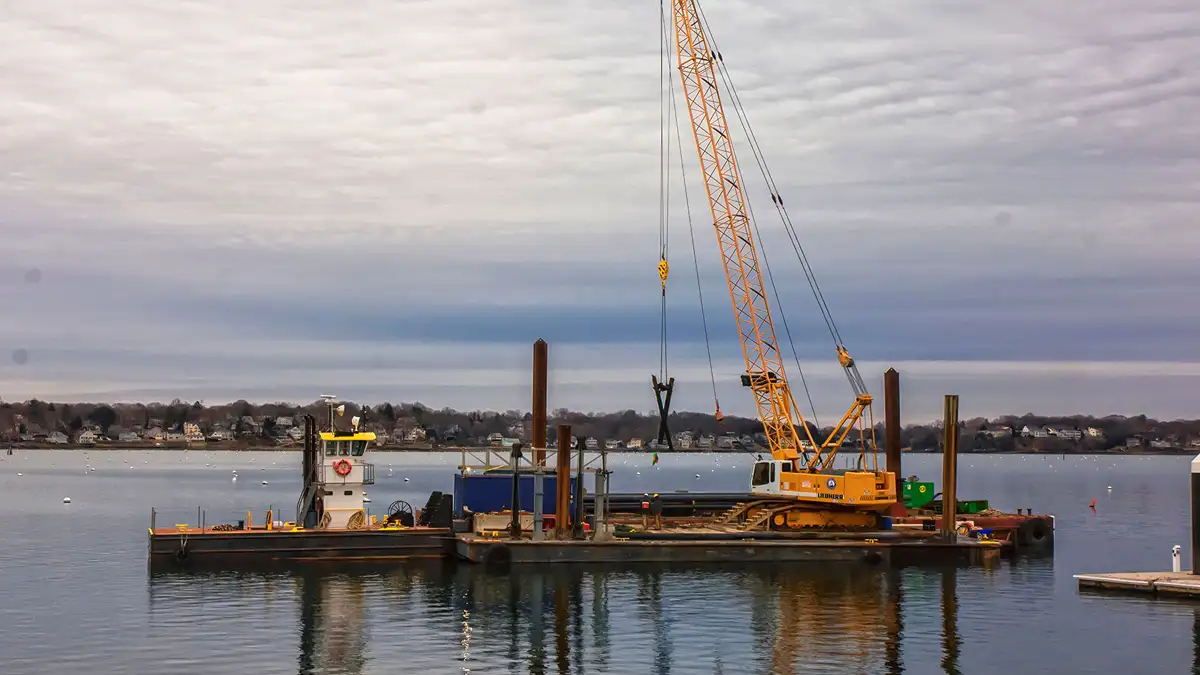
Procurement Strategy: Selecting the Right Dredge Technology
Project-Based Evaluation Criteria
Choosing the most effective dredging technology begins with a comprehensive understanding of the project’s operational, environmental, and logistical parameters. Procurement leaders and engineering teams must evaluate more than just capacity or price—they must assess how well the technology aligns with the specific requirements of the site. Key factors include sediment type, project scale, water depth, site access, and regulatory constraints. Hydraulic dredging machines may be better suited for open, expansive areas with soft sediment, while mechanical systems are often required in urban harbors, contaminated sites, or areas with debris and limited maneuverability. The selection process should also consider project timelines, target excavation volumes, and any required precision thresholds. In regulated environments, the ability of a dredge technology system to meet environmental compliance, such as turbidity control or emissions standards, can be just as important as throughput or operating cost. Compatibility with digital monitoring tools, like GPS tracking and IoT-based diagnostics, can provide additional value by enhancing oversight and reporting.Vendor Reliability and System Integration
Equally critical to the selection process is the vendor’s ability to deliver not just equipment, but long-term performance. Procurement teams should prioritize vendors with demonstrated experience supplying integrated dredging machines for large-scale industrial, municipal, or marine projects. A strong support structure, including technical training, spare parts availability, and post-sale service, can significantly reduce project risk and lifecycle cost. Modern dredge technology should also be evaluated for its compatibility with broader project systems. Integration with automation platforms, remote operation tools, and data-driven compliance dashboards enables better operational control and informed decision-making. Scalable systems that can be adapted across multiple sites or project types add further value for organizations managing diverse infrastructure portfolios. Ultimately, the goal is to invest in a dredging technology solution that not only meets today’s project needs but also positions the organization for long-term operational flexibility, compliance assurance, and cost efficiency.Industry: Applying the Right Technology in Practice
Mining Sector
In mining operations, dredging technology plays a vital role in tailings management, water resource control, and environmental remediation. Hydraulic systems are widely used in tailings ponds to efficiently transport fine sediment across large containment areas. Their ability to move high volumes of slurry through pipelines over long distances makes them ideal for keeping tailings basins clear and compliant with environmental standards. When working with compacted material, mechanical dredging machines, such as backhoes or bucket ladder dredgers, may be deployed to excavate dense sediment for dewatering or site reclamation. Precision and equipment durability are key in mining environments where sediment consistency varies and operational uptime is critical.Oil & Gas Industry
In the oil and gas sector, maintaining clear access to offshore infrastructure such as pipelines, platforms, and subsea facilities is essential. Hydraulic dredge technology is often used to clear accumulated sediment from approach channels and to ensure pipeline exposure or burial to regulatory standards. For more localized or debris-heavy areas, mechanical dredging machines offer the accuracy needed to excavate around sensitive assets without damaging critical components. Their ability to handle consolidated or obstructed seabed conditions makes them a necessary tool for offshore maintenance, underwater inspections, and emergency response operations.Municipal, Military, and Government Projects
Public sector dredging operations often involve maintaining navigability in rivers, harbors, canals, and reservoirs. For these applications, both hydraulic and mechanical dredging technology is deployed depending on material type and environmental regulations. Hydraulic systems are frequently used in inland waterways and flood control channels, where maintaining volume throughput and low turbidity are essential for long-term water management. Mechanical systems, on the other hand, are preferred for harbor maintenance near docks, bridge piers, or naval infrastructure where precise sediment removal is required. Additionally, hybrid or excavator-mounted dredging machines are increasingly used by municipal and defense agencies for rapid deployment in emergency scenarios such as post-storm debris removal, sediment build-up in critical logistics corridors, or dredging in areas with limited access. These examples highlight how choosing the right dredge technology tailored to each industry’s operational and environmental demands can deliver reliable, cost-effective outcomes while ensuring long-term infrastructure performance and compliance.